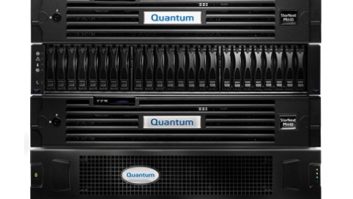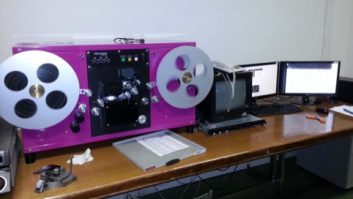In the world of cloud-based media and distribution it is sometimes hard to see how LTO is still standing.
Part of the “attack on LTO” has been from a wide variety of new technologies that challenge various aspects of the format and its relevance, and, we at Object Matrix have also witnessed a strong trend for many broadcasters pushing more of their archive content onto local or private cloud platforms. Is there even a point to the tape format anymore or is it only surviving because of “better the devil you know”; doomed to disappear altogether once people become educated to alternatives?
Trends point to Active rather than Dead Archives
There is a definite global trend for broadcasters across the globe pushing more of their content onto on-premises or off-premises (private or public) cloud platforms. The main reason for this trend comes down to instant access. Broadcasters are under increasing pressure to monetise their valuable content and push it out to multiple platforms. For instance, if content cannot be found instantly, this slows the creative process down considerably. Broadcasters need superfast access to the entire catalogue, and not just the low-resolution proxies, to realise new content streams. At a recent Amazon seminar in LA a number of speakers, from global broadcasters, explained how the need for instant access meant they were hammering their LTO libraries in such a way that failure rates inevitably rose dramatically. They determined that for frequent, fast access LTO is not the appropriate platform.
There is a need to access archive content to re-purpose legacy content for new audiences. Traditional broadcasters are sitting on a pre-recorded, ready-to-air gold mine of content. Providers such as Netflix have to start from scratch when it comes to content creation whereas traditional broadcasters across the globe have the advantage of sitting on untapped revenue streams that, until today, have been difficult to monetise. One UK broadcaster recently shared insights with us that old UK soap operas, available from the first episode, on demand, are proving incredibly popular with new younger audiences. When assets are hidden away on hard to access formats that potential can be missed.
Perhaps tape used to be the only real option for media libraries, but now the cost of disk and/or cloud has come down so much, is there anyone who technically actually prefers LTO to disk for an active archive?
How is tape still rolling?
Despite the obvious reasons for arguing against tape, it isn’t dead and will live on for the foreseeable future. That is clear in the fact new formats are being released and that, whilst tape can’t efficiently do all that disk storage can do, costs of the tape media itself means that for “fire and forget” workflows LTO protagonists still see it as having a place. And there are a lot of fire and forget workflows. We also have fantastic partners in the space where Object Matrix is used as an active archive cache and the LTO/ODA is used for the “dormant” assets.
For those people with assets that will go very dormant the ability to put a tape on a shelf with a low dollar per gigabyte cost is the trump card. Some argue that for security having a copy on tape is better (others the opposite). But for all of those people I’d strongly argue looking very closely at the cost argument on a case by case basis. Recent studies have shown that there is a closing (and/or closed) gap in terms of cost, and vice versa, tape protagonists will point to other TCO studies.
The OM View
Tape will be around for many years to come but its sure to be pushed and used in fewer use cases than today. Maybe those use cases will be cause for a lot of tapes to be sold making the tape industry appear “steady” but only in the context of a world that is storing increasing amounts of data.
Who would choose tape over disk except for financial reasons? There are very few valid technical reasons to consider it and the pure fact that tape has to wind its way through to a file, over disk, which can get to the file in nanoseconds is the clear and simple problem. Add to that problems of maintaining tapes, problems of migration between formats and problems of tape versions going out of date and it is a technology that a few love but many hate.
Sure a tape can lie dormant, but whilst an active archive adds value to an organisation an archive at rest purely adds cost.
In summary, the important thing it putting data where you need it to be when you need it. If that is a deep cold storage then LTO or ODA may be financially less expensive. But if instant or frequent access is your required model then implement a private cloud.






